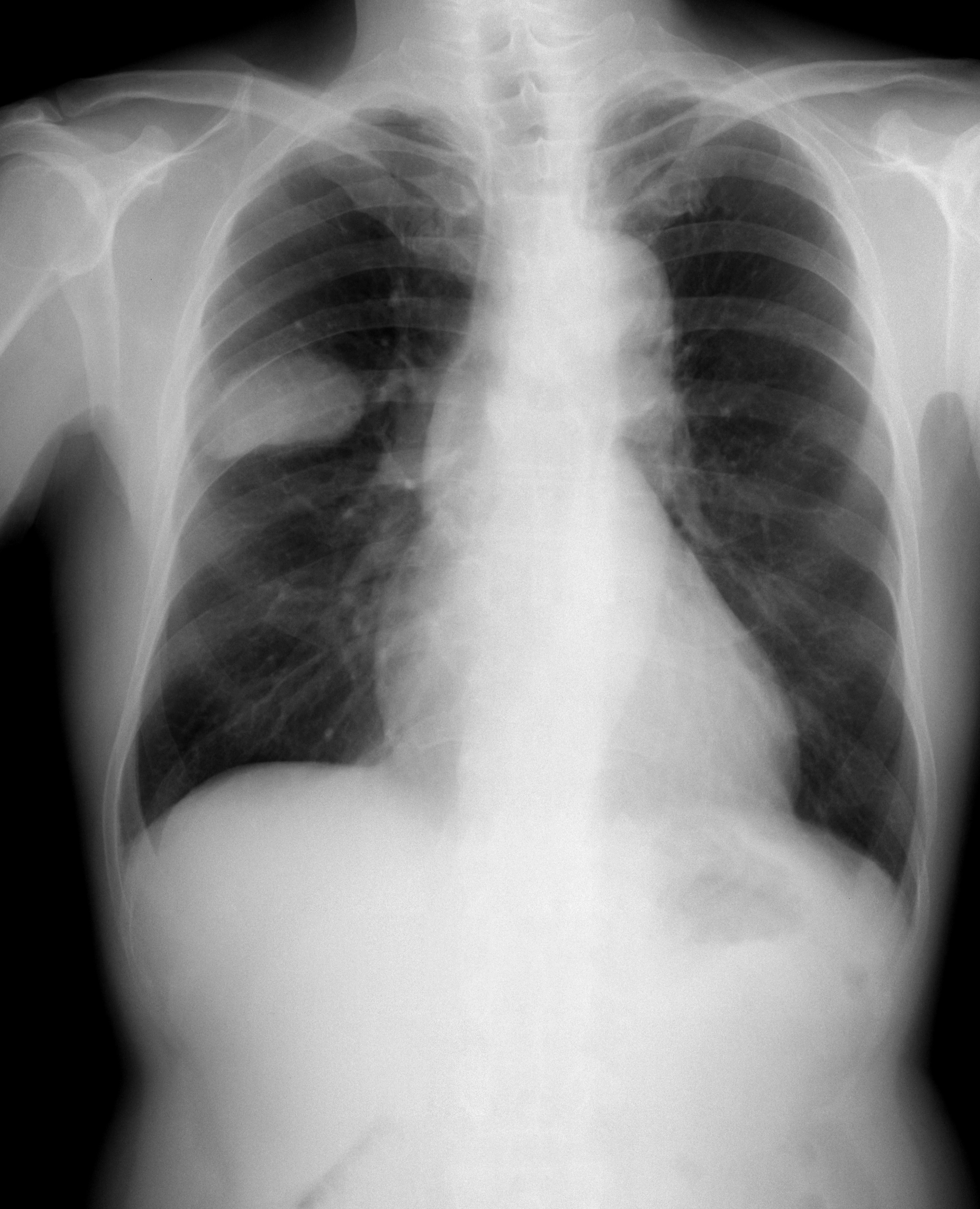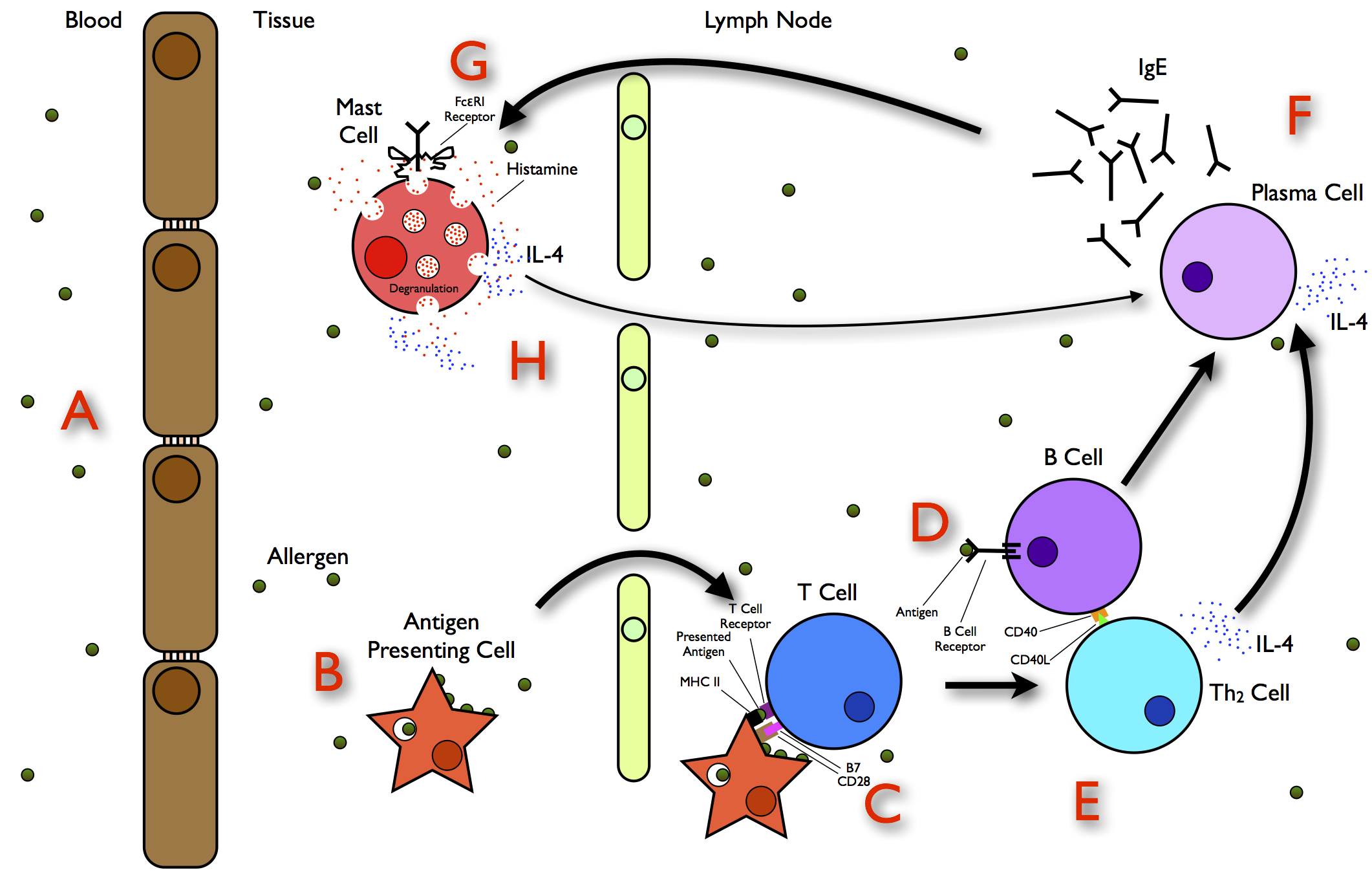 |
Cytoxan
Cyclophosphamide (CP), also known as cytophosphane among other names, is a medication used as chemotherapy and to suppress the immune system. As chemotherapy it is used to treat lymphoma, multiple myeloma, leukemia, ovarian cancer, breast cancer, small cell lung cancer, neuroblastoma, and sarcoma. As an immune suppressor it is used in nephrotic syndrome, ANCA-associated vasculitis, and following organ transplant, among other conditions. It is taken by mouth or injection into a vein. Most people develop side effects. Common side effects include low white blood cell counts, loss of appetite, vomiting, hair loss, and bleeding from the bladder. Other severe side effects include an increased future risk of cancer, infertility, allergic reactions, and pulmonary fibrosis. Cyclophosphamide is in the alkylating agent and nitrogen mustard family of medications. It is believed to work by interfering with the duplication of DNA and the creation of RNA. Cyclophosphamide was approved for ... [...More Info...] [...Related Items...] OR: [Wikipedia] [Google] [Baidu] [Amazon] |
|
Immunosuppressant
Immunosuppressive drugs, also known as immunosuppressive agents, immunosuppressants and antirejection medications, are drugs that inhibit or prevent the activity of the immune system. Classification Immunosuppressive drugs can be classified into five groups: * glucocorticoids * cytostatics * antibodies * drugs acting on immunophilins * other drugs Glucocorticoids In pharmacologic (supraphysiologic) doses, glucocorticoids, such as prednisone, dexamethasone, and hydrocortisone are used to suppress various allergic, inflammatory, and autoimmune disorders. They are also administered as posttransplantory immunosuppressants to prevent the acute transplant rejection and graft-versus-host disease. Nevertheless, they do not prevent an infection and also inhibit later reparative processes. Immunosuppressive mechanism Glucocorticoids suppress cell-mediated immunity. They act by inhibiting gene expression of cytokines including Interleukin 1 (IL-1), IL-2, IL-3, IL-4, IL-5, ... [...More Info...] [...Related Items...] OR: [Wikipedia] [Google] [Baidu] [Amazon] |
|
 |
Small Cell Lung Cancer
Small-cell carcinoma, also known as oat cell carcinoma, is a type of highly malignant cancer that most commonly arises within the lung, although it can occasionally arise in other body sites, such as the cervix, prostate, and gastrointestinal tract. Compared to non-small cell carcinoma, small cell carcinoma is more aggressive, with a shorter doubling time, higher growth fraction, and earlier development of metastases. Extensive stage small cell lung cancer (SCLC) is classified as a rare disorder. Ten-year relative survival rate (combined limited and extensive SCLC) is 3.5% (4.3% for women, 2.8% for men). Survival can be higher or lower based on a combination of factors including stage, age, sex and race. While all lung cancers are associated with tobacco smoking, SCLC is very strongly associated with tobacco smoking. Types Lung cancer Small-cell lung carcinoma (SCLC) has long been divided into two clinicopathological stages, termed limited stage (LS) and extensive stage (ES). ... [...More Info...] [...Related Items...] OR: [Wikipedia] [Google] [Baidu] [Amazon] |
|
OxfordDictionaries
''Lexico'' was a dictionary website that provided a collection of English and Spanish dictionaries produced by Oxford University Press (OUP), the publishing house of the University of Oxford. While the dictionary content on ''Lexico'' came from OUP, this website was operated by Dictionary.com, whose eponymous website hosts dictionaries by other publishers such as Random House. The website was closed and redirected to Dictionary.com on 26 August 2022. Before the Lexico site was launched, the '' Oxford Dictionary of English'' and '' New Oxford American Dictionary'' were hosted by OUP's own website ''Oxford Dictionaries Online'' (''ODO''), later known as ''Oxford Living Dictionaries''. The dictionaries' definitions have also appeared in Google definition search and the Dictionary application on macOS, among others, licensed through the Oxford Dictionaries API. History In the 2000s, OUP allowed access to content of the '' Compact Oxford English Dictionary of Current English'' on ... [...More Info...] [...Related Items...] OR: [Wikipedia] [Google] [Baidu] [Amazon] |
|
 |
Intravenous
Intravenous therapy (abbreviated as IV therapy) is a medical technique that administers fluids, medications and nutrients directly into a person's vein. The intravenous route of administration is commonly used for rehydration or to provide nutrients for those who cannot, or will not—due to reduced mental states or otherwise—consume food or water per os, by mouth. It may also be used to administer pharmaceutical drug, medications or other medical therapy such as blood transfusion, blood products or electrolytes to correct electrolyte imbalances. Attempts at providing intravenous therapy have been recorded as early as the 1400s, but the practice did not become widespread until the 1900s after the development of techniques for safe, effective use. The intravenous route is the fastest way to deliver medications and fluid replacement throughout the body as they are introduced directly into the circulatory system and thus quickly distributed. For this reason, the intravenous route ... [...More Info...] [...Related Items...] OR: [Wikipedia] [Google] [Baidu] [Amazon] |
|
Bone Marrow Suppression
Bone marrow suppression also known as myelotoxicity or myelosuppression, is the decrease in production of cells responsible for providing immunity (leukocytes), carrying oxygen (erythrocytes), and/or those responsible for normal blood clotting (thrombocytes). Bone marrow suppression is a serious side effect of chemotherapy and certain drugs affecting the immune system such as azathioprine. The risk is especially high in cytotoxic chemotherapy for leukemia. In the case of non-small-cell lung cancer, myelosuppression predisposition was shown to be modulated by enhancer mutations. Nonsteroidal anti-inflammatory drugs (NSAIDs), in some rare instances, may also cause bone marrow suppression. The decrease in blood cell counts does not occur right at the start of chemotherapy because the drugs do not destroy the cells already in the bloodstream (these are not dividing rapidly). Instead, the drugs affect new blood cells that are being made by the bone marrow. When myelosuppression is se ... [...More Info...] [...Related Items...] OR: [Wikipedia] [Google] [Baidu] [Amazon] |
|
|
Autoimmune Disease
An autoimmune disease is a condition that results from an anomalous response of the adaptive immune system, wherein it mistakenly targets and attacks healthy, functioning parts of the body as if they were foreign organisms. It is estimated that there are more than 80 recognized autoimmune diseases, with recent scientific evidence suggesting the existence of potentially more than 100 distinct conditions. Nearly any body part can be involved. Autoimmune diseases are a separate class from autoinflammatory diseases. Both are characterized by an immune system malfunction which may cause similar symptoms, such as rash, swelling, or fatigue, but the cardinal cause or mechanism of the diseases is different. A key difference is a malfunction of the innate immune system in autoinflammatory diseases, whereas in autoimmune diseases there is a malfunction of the adaptive immune system. Symptoms of autoimmune diseases can significantly vary, primarily based on the specific type of the d ... [...More Info...] [...Related Items...] OR: [Wikipedia] [Google] [Baidu] [Amazon] |
|
|
WHO Model List Of Essential Medicines
The WHO Model List of Essential Medicines (aka Essential Medicines List or EML), published by the World Health Organization (WHO), contains the medications considered to be most effective and safe to meet the most important needs in a health system. The list is frequently used by countries to help develop their own local lists of essential medicines. , more than 155 countries have created national lists of essential medicines based on the World Health Organization's model list. This includes both Developed country, developed and Developing country, developing countries. The list is divided into core items and complementary items. The core items are deemed to be the most cost-effective options for key health problems and are usable with little additional health care resources. The complementary items either require additional infrastructure such as specially trained health care providers or diagnostic equipment or have a lower cost–benefit ratio. About 25% of items are in the ... [...More Info...] [...Related Items...] OR: [Wikipedia] [Google] [Baidu] [Amazon] |
|
|
Nitrogen Mustard
Nitrogen mustards (NMs) are cytotoxic organic compounds with the bis(2-chloroethyl)amino ((ClC2H4)2NR) functional group. Although originally produced as chemical warfare agents, they were the first chemotherapeutic agents for treatment of cancer. Nitrogen mustards are nonspecific DNA alkylating agents. Name Nitrogen mustards are not related to the mustard plant or its pungent essence, allyl isothiocyanate; the name comes from the pungent smell of chemical weapons preparations. Chemical warfare During World War II, nitrogen mustards were studied at the Yale School of Medicine by Alfred Gilman and Louis Goodman, and in December 1942, they started classified human clinical trials of nitrogen mustards for the treatment of lymphoma. In early December of 1943, an incident during the air raid on Bari, Italy, led to the release of mustard gas that affected several hundred soldiers and civilians. Medical examination of the survivors showed a decreased number of lymphocytes. Aft ... [...More Info...] [...Related Items...] OR: [Wikipedia] [Google] [Baidu] [Amazon] |
|
 |
Alkylating Antineoplastic Agent
An alkylating antineoplastic agent is an alkylating agent used in cancer treatment that attaches an alkyl group (CnH2n+1) to DNA. Since cancer cells, in general, proliferate faster and with less error-correcting than healthy cells, cancer cells are more sensitive to DNA damage—such as being alkylated. Alkylating agents are used to treat several cancers. However, they are also toxic to normal cells (cytotoxic), particularly cells that divide frequently, such as those in the gastrointestinal tract, bone marrow, testicles and ovaries, which can cause loss of fertility. Most of the alkylating agents are also carcinogenic. History Before their use in chemotherapy, alkylating agents were better known for their use as sulfur mustard, ("mustard gas") and related chemical weapons in World War I. The nitrogen mustards were the first alkylating agents used medically, as well as the first modern cancer chemotherapies. Goodman, Gilman, and others began studying nitrogen mustards at Yale ... [...More Info...] [...Related Items...] OR: [Wikipedia] [Google] [Baidu] [Amazon] |
|
Pulmonary Fibrosis
Pulmonary fibrosis is a condition in which the lungs become scarred over time. Symptoms include shortness of breath, a dry cough, feeling tired, weight loss, and nail clubbing. Complications may include pulmonary hypertension, respiratory failure, pneumothorax, and lung cancer. Causes include environmental pollution, certain medications, connective tissue diseases, infections, and interstitial lung diseases. But in most cases the cause is unknown ( idiopathic pulmonary fibrosis). Diagnosis may be based on symptoms, medical imaging, lung biopsy, and lung function tests. No cure exists and treatment options are limited. Treatment is directed toward improving symptoms and may include oxygen therapy and pulmonary rehabilitation. Certain medications may slow the scarring. Lung transplantation may be an option. At least 5 million people are affected globally. Life expectancy is generally less than five years. Signs and symptoms Symptoms of pulmonary fibrosis are ... [...More Info...] [...Related Items...] OR: [Wikipedia] [Google] [Baidu] [Amazon] |
|
 |
Allergic Reactions
Allergies, also known as allergic diseases, are various conditions caused by hypersensitivity of the immune system to typically harmless substances in the environment. These diseases include hay fever, food allergies, atopic dermatitis, allergic asthma, and anaphylaxis. Symptoms may include red eyes, an itchy rash, sneezing, coughing, a runny nose, shortness of breath, or swelling. Note that food intolerances and food poisoning are separate conditions. Common allergens include pollen and certain foods. Metals and other substances may also cause such problems. Food, insect stings, and medications are common causes of severe reactions. Their development is due to both genetic and environmental factors. The underlying mechanism involves immunoglobulin E antibodies (IgE), part of the body's immune system, binding to an allergen and then to a receptor on mast cells or basophils where it triggers the release of inflammatory chemicals such as histamine. Diagnosis is typic ... [...More Info...] [...Related Items...] OR: [Wikipedia] [Google] [Baidu] [Amazon] |